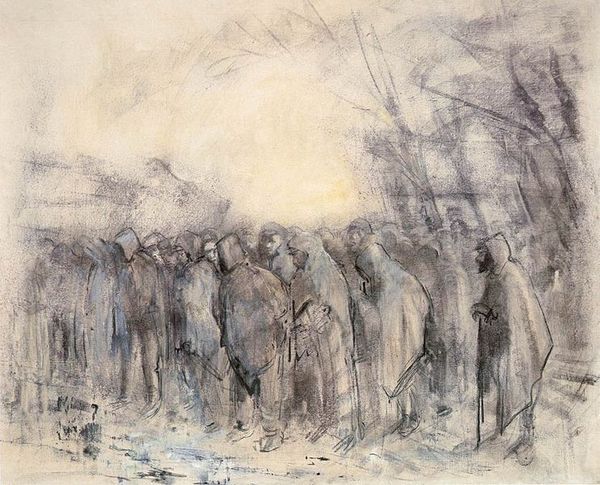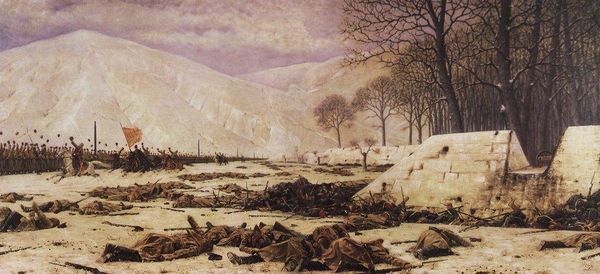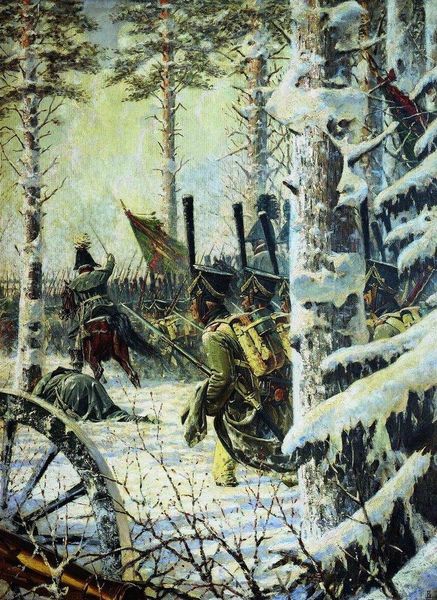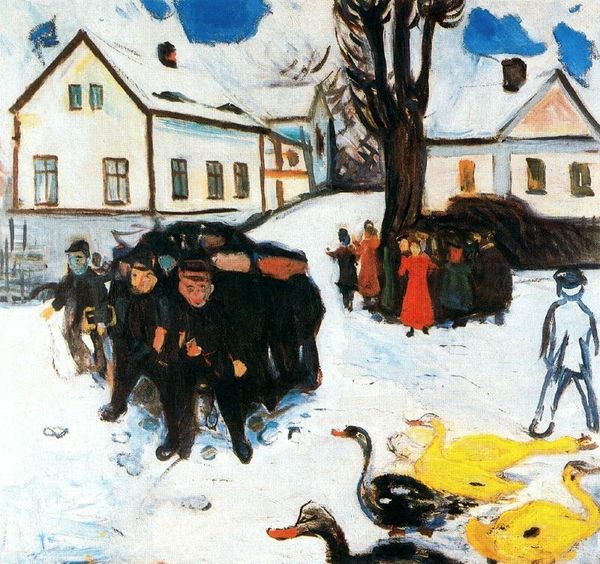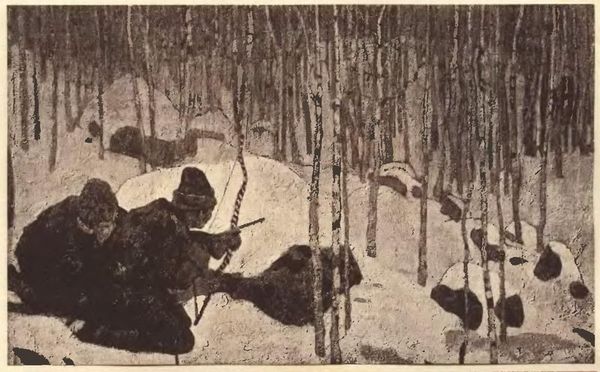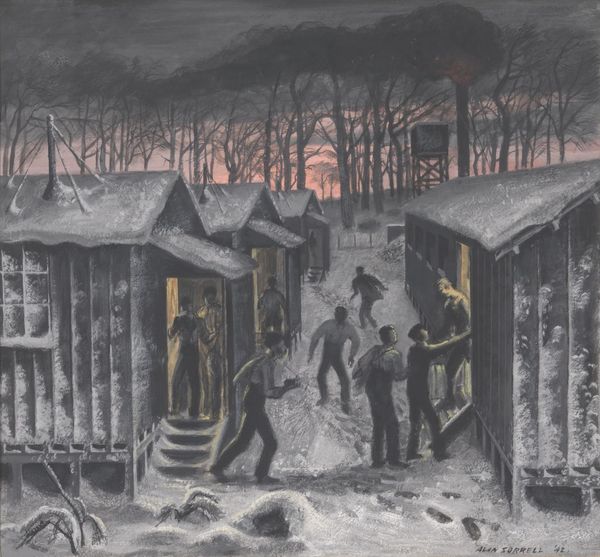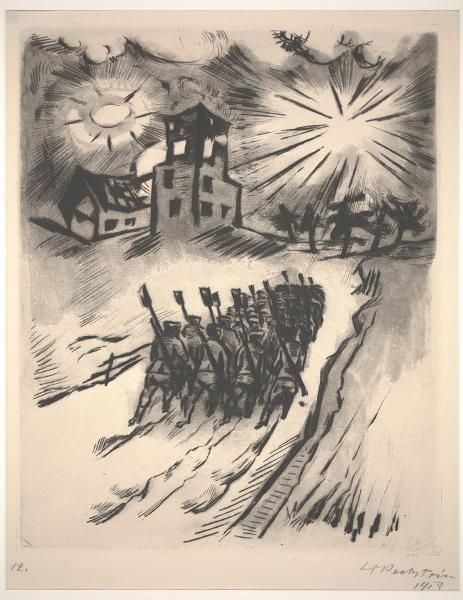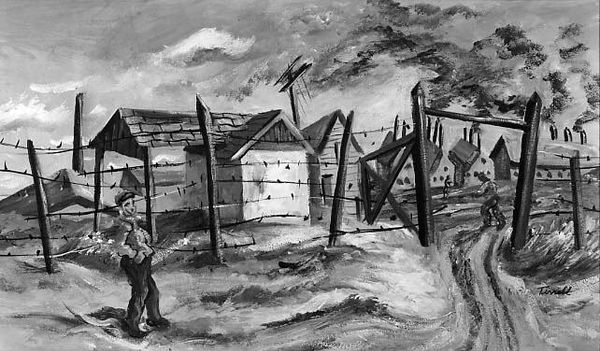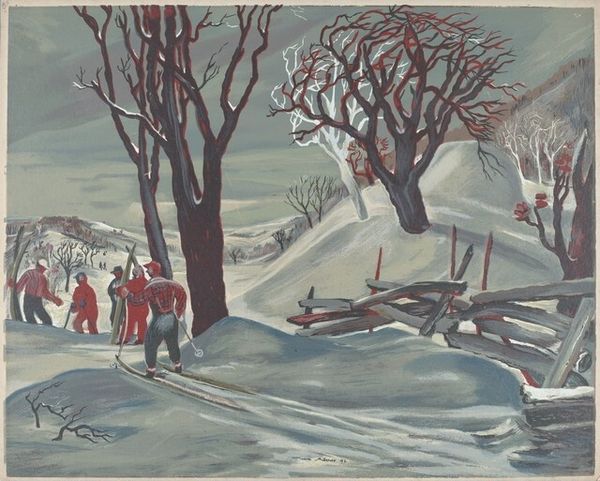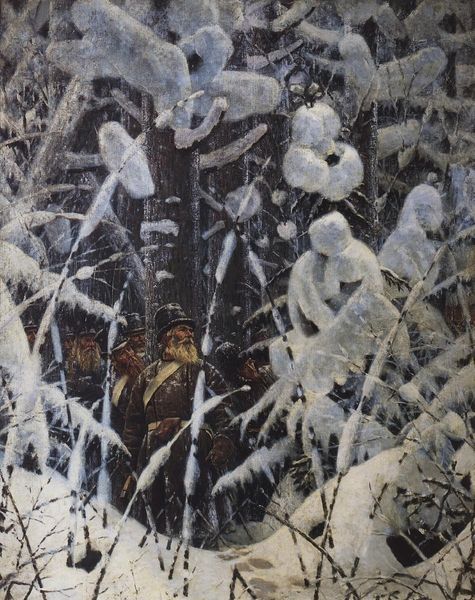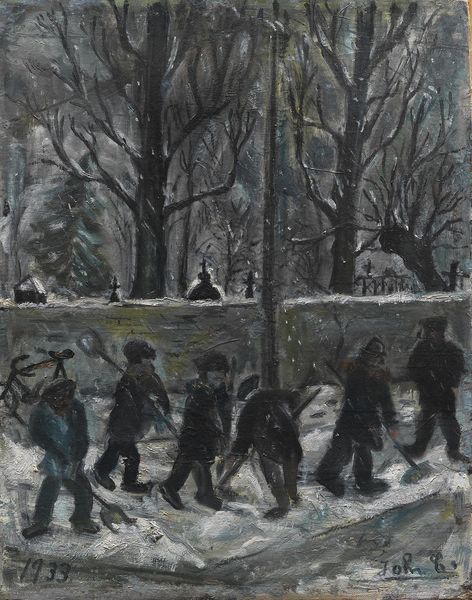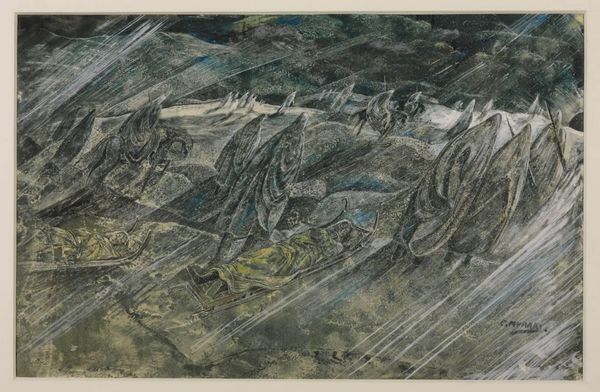
watercolor
#
snow
#
narrative-art
#
landscape
#
impressionist landscape
#
possibly oil pastel
#
social-realism
#
oil painting
#
watercolor
#
expressionism
#
russian-avant-garde
#
cityscape
#
watercolor
Copyright: Public domain US
Curator: Mstislav Dobuzhinsky's "From the Life in Petrograd in 1920" is rendered in watercolor, depicting a snow-laden cityscape. Editor: The overall feeling is bleak. There's a real sense of hardship and struggle conveyed through the muted palette and skeletal branches that seem to claw across the scene. Curator: It's crucial to view this through the lens of the Russian Civil War. Petrograd, now St. Petersburg, was gripped by famine and extreme scarcity. This watercolor becomes a document of social and economic collapse. Dobuzhinsky was capturing a lived reality. Editor: Absolutely. The repetitive figures, weighed down with… presumably, what little they possess… their postures speak volumes. Are those supplies they carry? What exactly are the inhabitants struggling to obtain in a landscape so devastated? Curator: Consider also the material constraints. The very choice of watercolor might reflect the limited resources available to artists at that time. This isn't opulent oil paint; it's a humble, accessible medium suited for documentary observation. Think about distribution networks at this time: state commissions might privilege propaganda art while leaving more difficult narratives underfunded. Editor: You’re right, that's interesting. Look how the poster pillar on the left becomes a kind of symbolic anchor. I mean, on the surface it advertises social values, perhaps even state support, against the backdrop of evident deprivation. A powerful visual juxtaposition. And what of the perspective, how it pushes you the viewer to encounter someone at the front; a subject, no doubt, experiencing the very reality this canvas describes. What purpose could this have served within and without Russia's political landscape? Curator: This work definitely transcends pure aesthetic contemplation. It presents an act of witnessing, making it a crucial historical artifact capable of informing policy on the fragility of socioeconomic systems under pressure. How this painting navigates institutions after its execution is telling of those very pressures in place, and helps to construct an ever-evolving history for us. Editor: A vital piece in understanding both the human cost of conflict, but how art making and distribution navigates political turmoil. It leaves me thinking about the intersection of art and propaganda then and today. Curator: A sober reminder indeed.
Comments
No comments
Be the first to comment and join the conversation on the ultimate creative platform.
